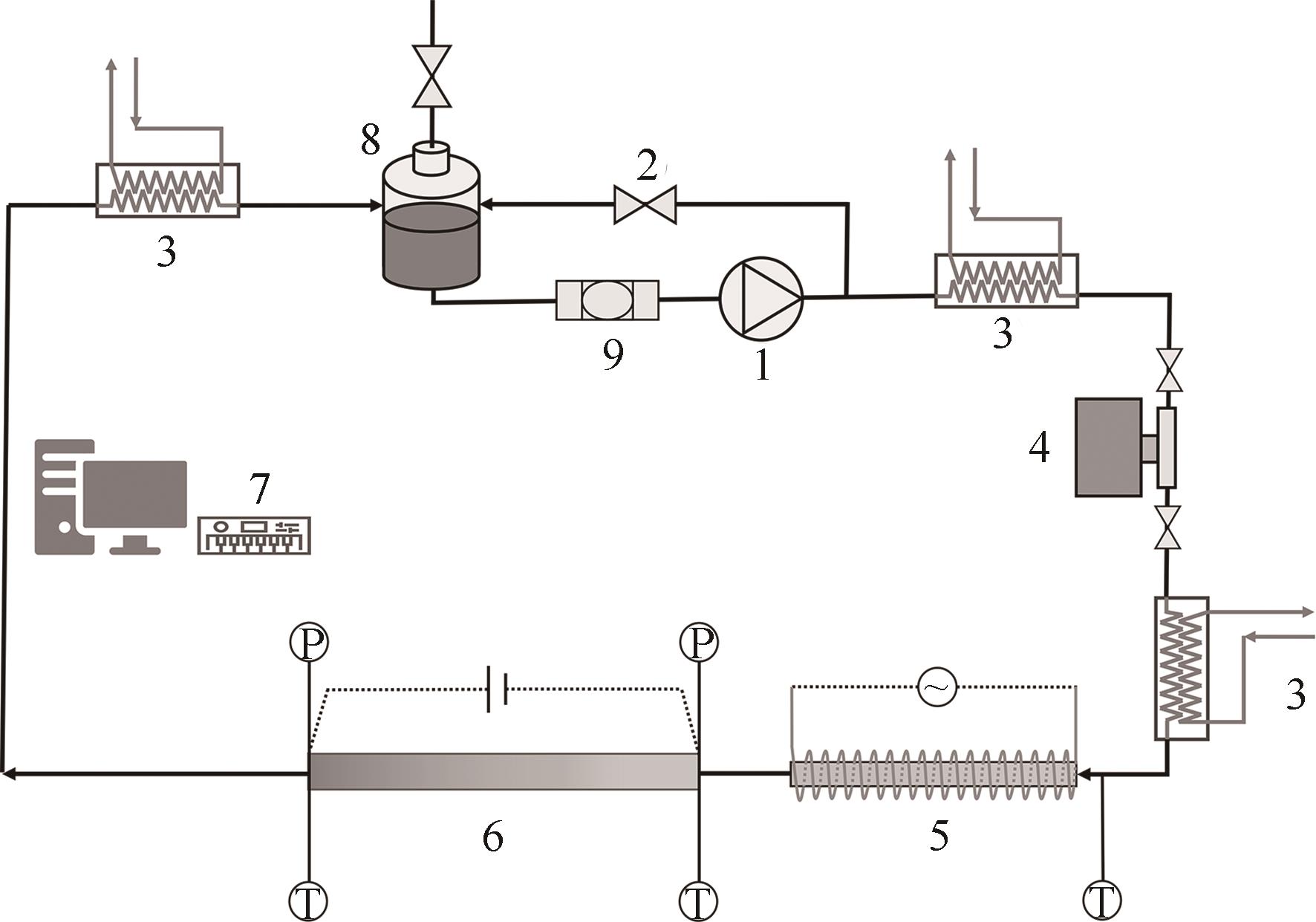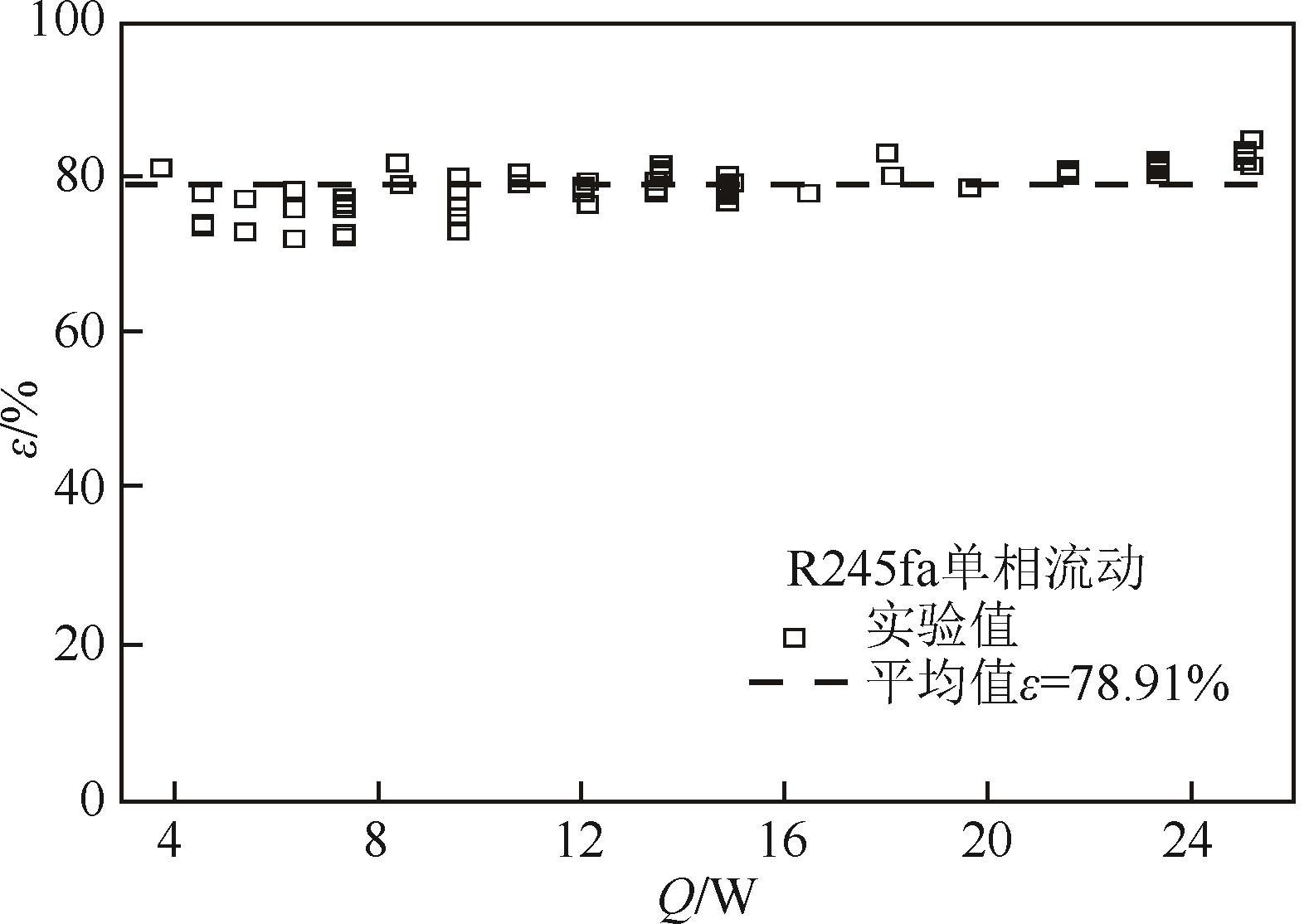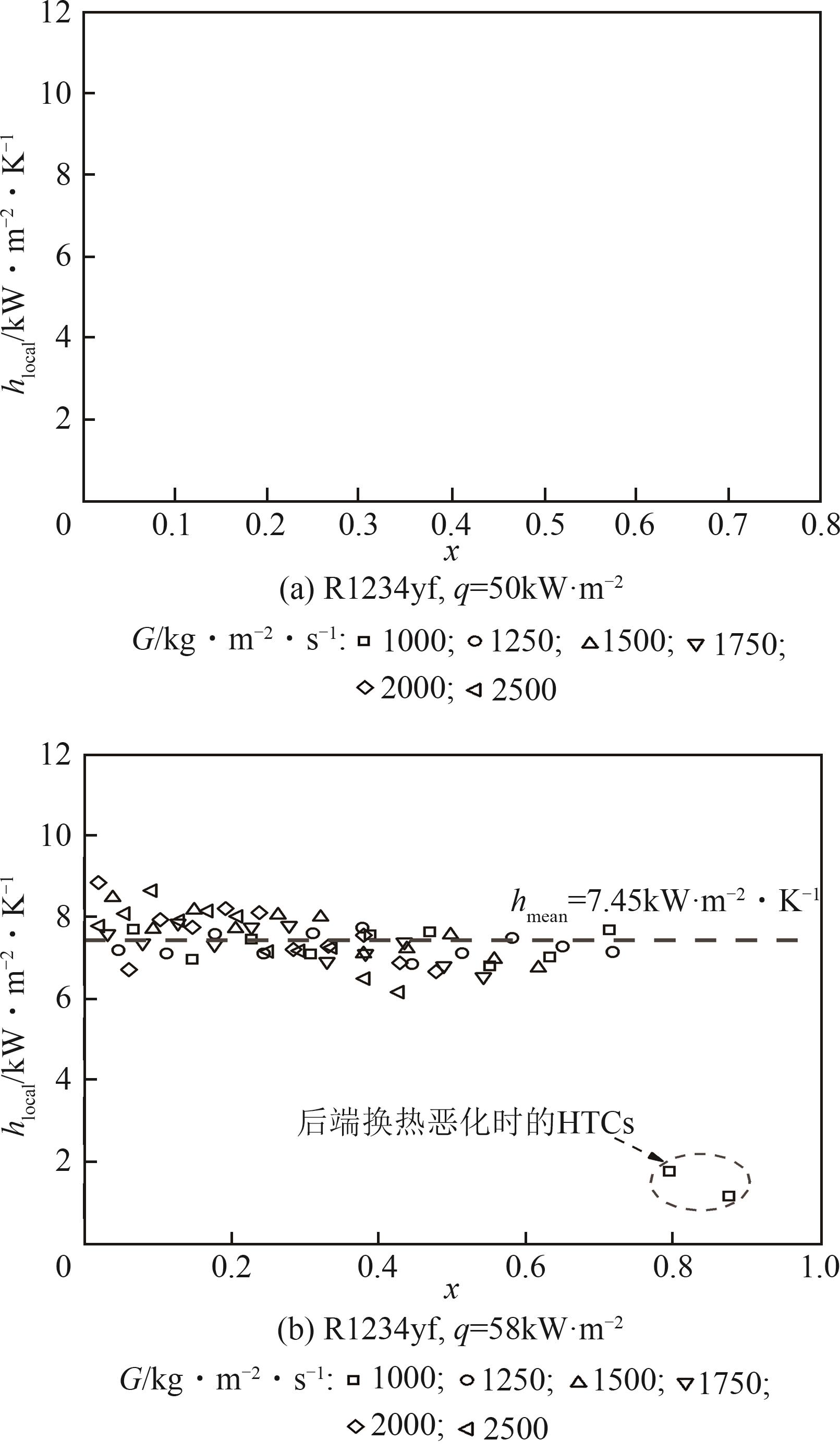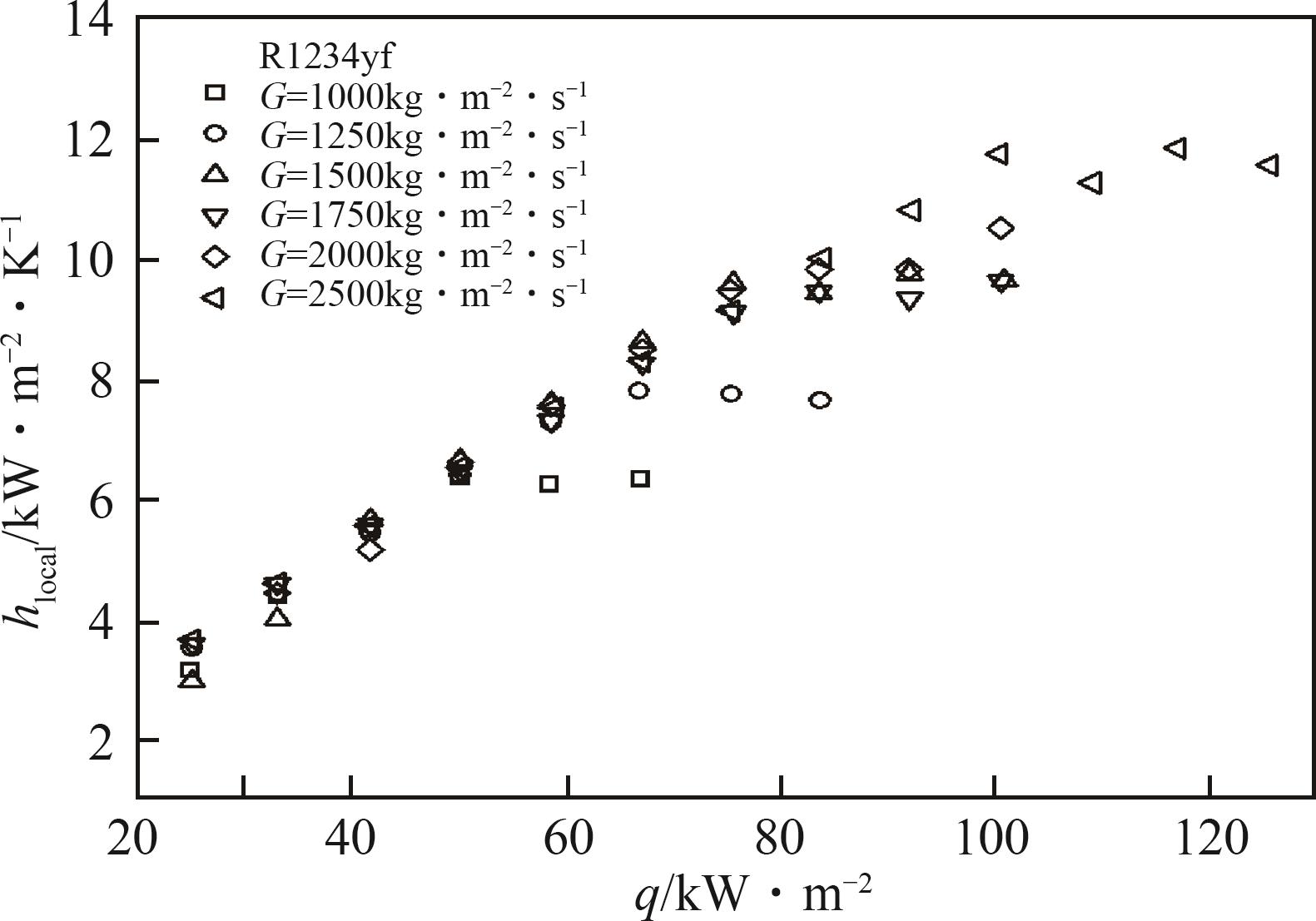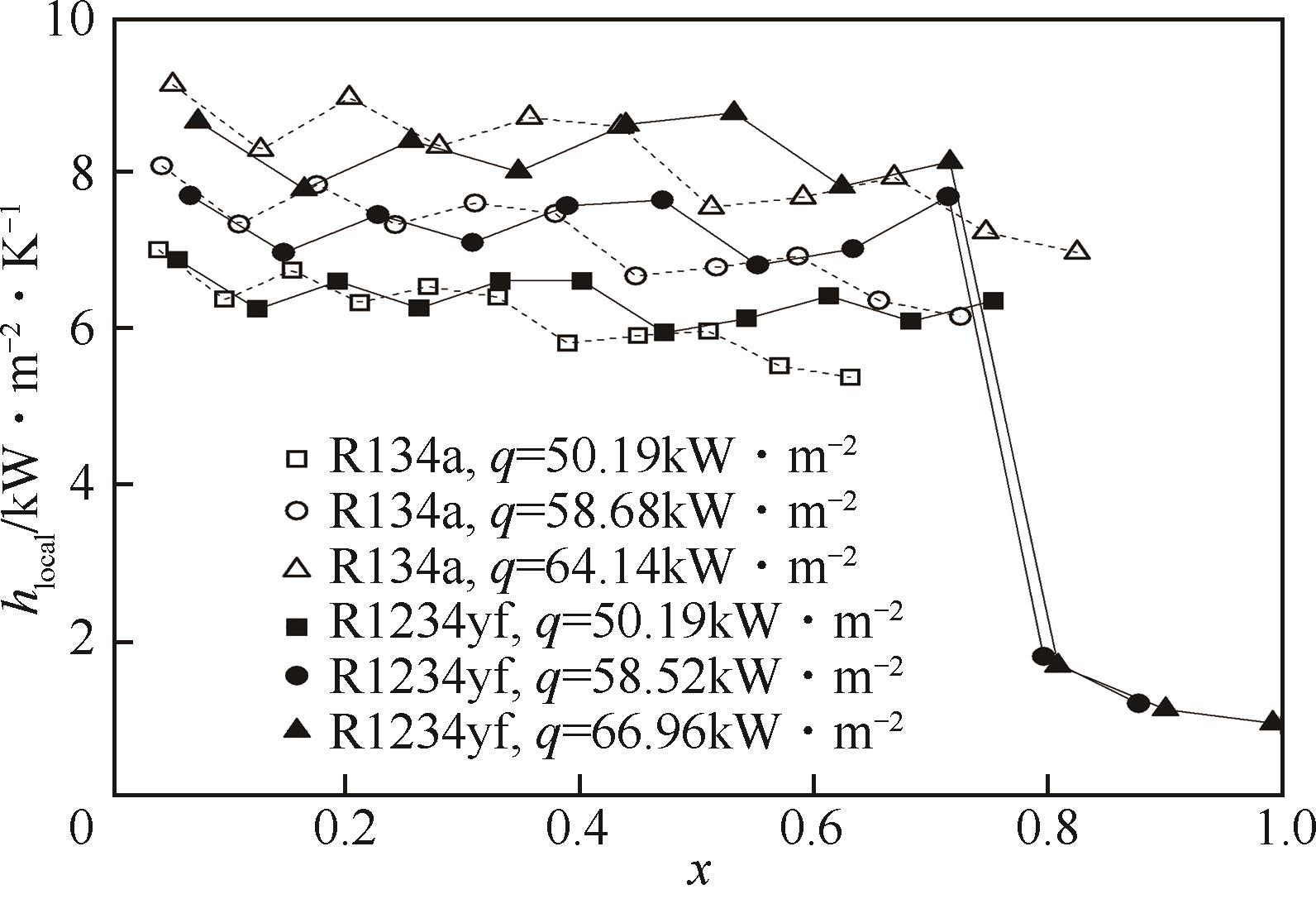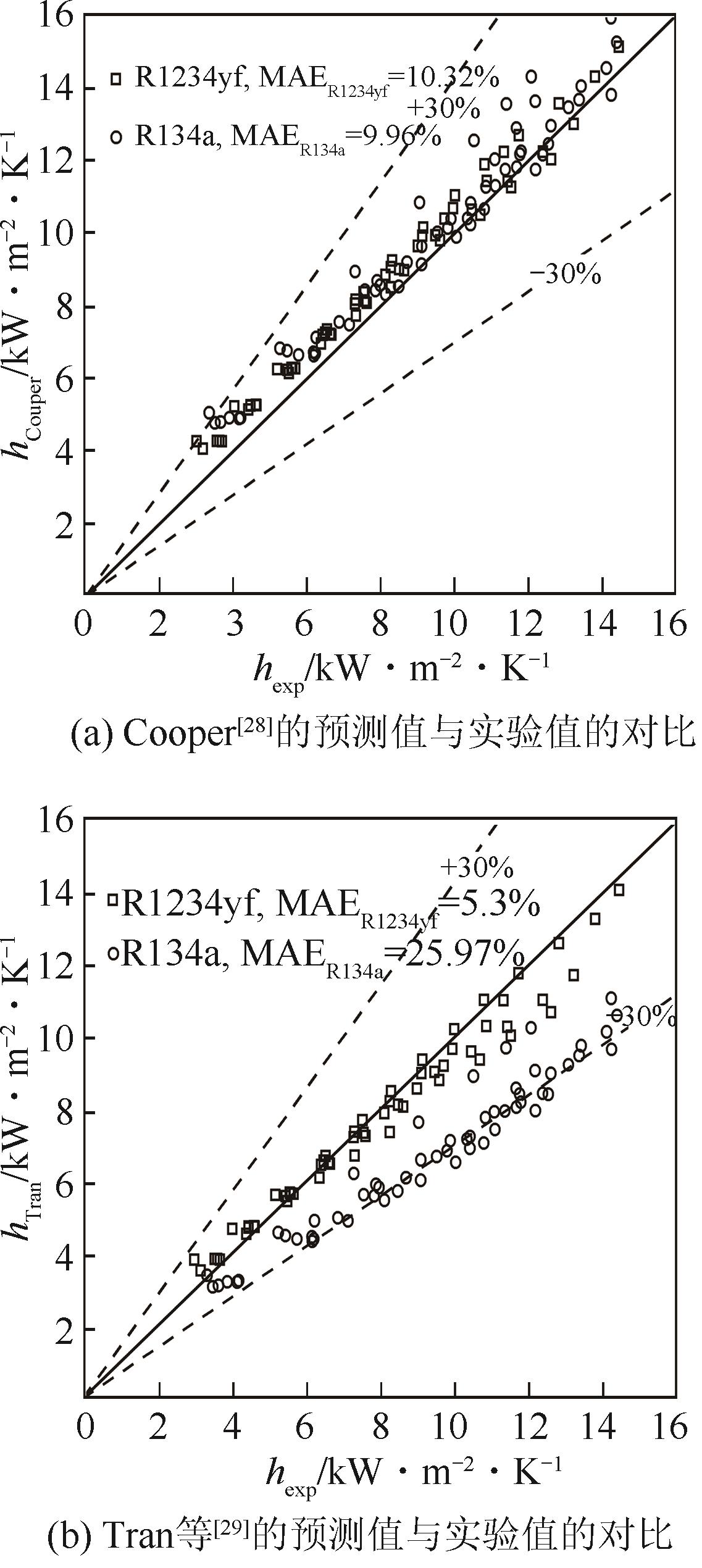| 1 |
UNEP.[C]// 38th Meeting of the Open-ended Working Group (OEWG 38) of the Parties to the Montreal Protocol on Substances that Deplete the Ozone Layer and 28th Meeting of the Parties to the Montreal Protocol (MOP 28), Kigali, 2016.
|
| 2 |
NIELSEN O J, JAVADI M S, SULBAEK ANDERSEN M P, et al. Atmospheric chemistry of CF3CF ̿ CH2: kinetics and mechanisms of gas-phase reactions with Cl atoms, OH radicals, and O3 [J]. Chemical Physics Letters, 2007, 439(1/2/3): 18-22.
|
| 3 |
MCLINDEN M O, KAZAKOV A F, STEVEN BROWN J, et al. A thermodynamic analysis of refrigerants: possibilities and tradeoffs for Low-GWP refrigerants[J]. International Journal of Refrigeration, 2014, 38: 80-92.
|
| 4 |
QI Z G. Performance improvement potentials of R1234yf mobile air conditioning system[J]. International Journal of Refrigeration, 2015, 58: 35-40.
|
| 5 |
GARCIA PABON J, KHOSRAVI A, NUNES R, et al. Experimental investigation of pressure drop during two-phase flow of R1234yf in smooth horizontal tubes with internal diameters of 3.2 mm to 8.0 mm[J]. International Journal of Refrigeration, 2019, 104: 426-436.
|
| 6 |
YANG C Y, NALBANDIAN H, LIN F C. Flow boiling heat transfer and pressure drop of refrigerants HFO-1234yf and HFC-134a in small circular tube[J]. International Journal of Heat and Mass Transfer, 2018, 121: 726-735.
|
| 7 |
LONGO G A, MANCIN S, RIGHETTI G, et al. R1234yf and R1234ze(E) as environmentally friendly replacements of R134a: Assessing flow boiling on an experimental basis[J]. International Journal of Refrigeration, 2019, 108: 336-346.
|
| 8 |
LU M C, TONG J R, WANG C C. Investigation of the two-phase convective boiling of HFO-1234yf in a 3.9mm diameter tube[J]. International Journal of Heat and Mass Transfer, 2013, 65: 545-551.
|
| 9 |
王锐, 陈斌, 王嘉丰, 等. R1234yf瞬态喷雾冷却及过热度影响的实验研究[J]. 化工学报, 2018, 69(2): 595-601.
|
|
WANG Rui, CHEN Bin, WANG Jiafeng, et al. Experimental research of R1234yf transient spray cooling and influence of cryogen superheat degree[J]. CIESC Journal, 2018, 69(2): 595-601.
|
| 10 |
孟照峰, 张华, 秦延斌, 等. R1234yf/R134a混合物在汽车空调中替代R134a的实验研究[J]. 化工学报, 2018, 69(6): 2396-2403.
|
|
MENG Zhaofeng, ZHANG Hua, QIN Yanbin, et al. Experimental study on R1234yf/R134a mixture as alternative to R134a in automobile air conditioner[J]. CIESC Journal, 2018, 69(6): 2396-2403.
|
| 11 |
杨梦, 张华, 秦延斌, 等. 混合制冷剂R134a/R1234yf(R513A)与R134a热力学性能对比及实验[J]. 化工进展, 2019, 38(3): 1182-1189.
|
|
YANG Meng, ZHANG Hua, QIN Yanbin, et al. Thermodynamic performance comparison and experimental study of mixed refrigerant R134a/R1234yf(R513A) and R134a[J]. Chemical Industry and Engineering Progress, 2019, 38(3): 1182-1189.
|
| 12 |
ANWAR Z, PALM B, KHODABANDEH R. Flow boiling heat transfer and dryout characteristics of R152a in a vertical mini-channel[J]. Experimental Thermal and Fluid Science, 2014, 53: 207-217.
|
| 13 |
LI W, WU Z. A general criterion for evaporative heat transfer in micro/mini-channels[J]. International Journal of Heat and Mass Transfer, 2010, 53(9/10): 1967-1976.
|
| 14 |
YANG Q C, SHU B F, WANG J, et al. Experimental investigation on flow boiling heat transfer and flow patterns in a single micro-channel with large mass velocity[J]. Experimental Thermal and Fluid Science, 2018, 91: 283-291.
|
| 15 |
DE DEL COL D, BORTOLIN S, TORRESIN D, et al. Flow boiling of R1234yf in a 1mm diameter channel[J]. International Journal of Refrigeration, 2013, 36(2): 353-362.
|
| 16 |
SAITOH S, DANG C B, NAKAMURA Y, et al. Boiling heat transfer of HFO-1234yf flowing in a smooth small-diameter horizontal tube[J]. International Journal of Refrigeration, 2011, 34(8): 1846-1853.
|
| 17 |
ANWAR Z, PALM B, KHODABANDEH R. Flow boiling heat transfer, pressure drop and dryout characteristics of R1234yf: experimental results and predictions[J]. Experimental Thermal and Fluid Science, 2015, 66: 137-149.
|
| 18 |
SEMPÉRTEGUI-TAPIA D F, RIBATSKI G. Flow boiling heat transfer of R134a and low GWP refrigerants in a horizontal micro-scale channel[J]. International Journal of Heat and Mass Transfer, 2017, 108: 2417-2432.
|
| 19 |
ONG C L, THOME J R. Flow boiling heat transfer of R134a, R236fa and R245fa in a horizontal 1.030mm circular channel[J]. Experimental Thermal and Fluid Science, 2009, 33(4): 651-663.
|
| 20 |
党超, 贾力, 黄浅. 矩形微槽道内R134a流动沸腾换热特性的实验研究[J]. 工程热物理学报, 2017, 38(6): 1327-1332.
|
|
DANG Chao, JIA Li, HUANG Qian. Experimental study on flow boiling heat transfer characteristics of R134a in a rectangular micro-channel[J]. Journal of Engineering Thermophysics, 2017, 38(6): 1327-1332.
|
| 21 |
GNIELINSKI V. New equations for heat and mass transfer in turbulent pipe and channel flow[J]. International Journal of Chemical Engineering, 1976, 16: 359-368.
|
| 22 |
MOFFAT R J. Describing the uncertainties in experimental results[J]. Experimental Thermal and Fluid Science, 1988, 1(1): 3-17.
|
| 23 |
杞卓玲, 贾力, 党超. 微细通道内非共沸工质流动沸腾换热实验研究[J]. 工程热物理学报, 2018, 39(9): 2005-2011.
|
|
QI Zhuoling, JIA Li, DANG Chao. Experimental investigation on flow boiling heat transfer characteristics of zeotropic mixture in microchannels[J]. Journal of Engineering Thermophysics, 2018, 39(9): 2005-2011.
|
| 24 |
刘梦悦, 柳建华, 张良. R1234yf在小管径管内流动沸腾换热特性研究[J]. 热能动力工程, 2020, 35(9): 65-70.
|
|
LIU Mengyue, LIU Jianhua, ZHANG Liang. Study on flow boiling heat transfer characteristics of R1234yf in small-diameter tubes[J]. Journal of Engineering for Thermal Energy and Power, 2020, 35(9): 65-70.
|
| 25 |
KAEW-ON J, SAKAMATAPAN K, WONGWISES S. Flow boiling heat transfer of R134a in the multiport minichannel heat exchangers[J]. Experimental Thermal and Fluid Science, 2011, 35(2): 364-374.
|
| 26 |
TORFEH S, KOUHIKAMALI R. Numerical investigation of mist flow regime in a vertical tube[J]. International Journal of Thermal Sciences, 2015, 95: 1-8.
|
| 27 |
MARTI´N-CALLIZO C, ALI R, PALM B. Dryout incipience and critical heat flux in saturated flow boiling of refrigerants in a vertical uniformly heated microchannel[C]//Proceedings of ASME 2008 6th International Conference on Nanochannels, Microchannels, and Minichannels, June 23-25, 2008, Darmstadt, Germany. 2009: 705-712.
|
| 28 |
COOPER M G. Saturation nucleate pool boiling —A simple correlation[C]//First U.K. National Conference on Heat Transfer. Amsterdam: Elsevier, 1984: 785-793.
|
| 29 |
TRAN T N, WAMBSGANSS M W, FRANCE D M. Small circular- and rectangular-channel boiling with two refrigerants[J]. International Journal of Multiphase Flow, 1996, 22(3): 485-498.
|
 ), 钟珂1, 张羽森1, 商庆春2, 贾洪伟1(
), 钟珂1, 张羽森1, 商庆春2, 贾洪伟1( )
)
 ), ZHONG Ke1, ZHANG Yusen1, SHANG Qingchun2, JIA Hongwei1(
), ZHONG Ke1, ZHANG Yusen1, SHANG Qingchun2, JIA Hongwei1( )
)
